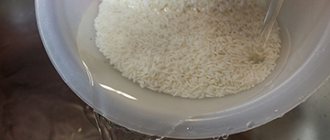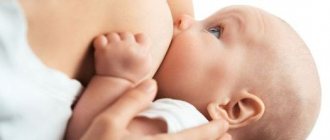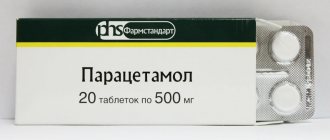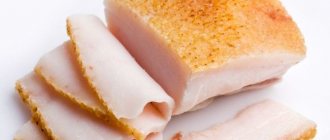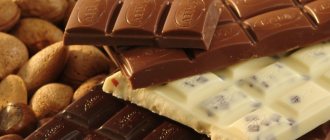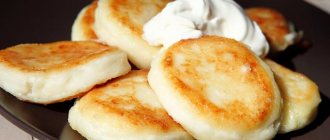The popularity of solariums among the fair sex is great without exaggeration. An even tan allows you to achieve a beautiful skin tone, hide various imperfections on the surface of the skin, and also give your body a visually slim and toned appearance. This is what a woman desires with all her heart during the postpartum period. However, let’s consider whether it is allowed to visit a solarium while breastfeeding.
Is a solarium good for nursing mothers?
A light shade of bronze on the skin will help hide minor imperfections and make you look fresher and more youthful. And every woman, including the status of a young mother, dreams of having an attractive appearance, so the question of safe tanning products becomes relevant for her.
So women who have recently given birth consider visiting a solarium as one of the best options to correct their appearance inexpensively, quickly and effectively. But do the plans correspond to reality?
By the way, information for those who have not yet used the service: a solarium is special equipment that emits rays similar to those of the sun and allows you to enjoy ultraviolet radiation all year round.
The benefits of solarium during breastfeeding
Still, there are important reasons that allow busy young mothers to bask a little under the artificial “sun”.
- Reason one : under the influence of ultraviolet radiation, the body synthesizes vitamin D, which is necessary for mother and baby, promotes better absorption of calcium, prevents the development of rickets, and normalizes the functioning of the heart muscle.
- Reason two : ultraviolet radiation promotes the production of serotonin, the pleasure hormone, which has a beneficial effect on a woman’s emotional background.
- Reason three : tanning in a solarium helps strengthen the immune system and reduces the body's susceptibility to viruses and bacteria.
But most experts have a negative attitude towards visiting a solarium by breastfeeding women. Doctors believe that manufacturers and equipment owners talk more about the benefits of solariums, but the safety of artificial tanning during lactation has not been clinically proven. Ultraviolet radiation does not affect the taste, color and quantity of milk, but has an active effect on the female body.
Is it possible to visit a solarium while breastfeeding?
After the birth of a baby, every woman wants to quickly return to her previous shape. Many girls think that a nice tan will help with this. But doctors do not advise starting to actively visit the solarium while breastfeeding.
First of all, it is important to note that from a medical point of view, tanning is extremely harmful to the skin and body, regardless of whether the client is a new mother or someone else. In addition, artificial ultraviolet rays do not directly affect the quantity of milk and its quality.
Why shouldn't a nursing mother go to the solarium?
Vitamin D and serotonin are certainly useful and necessary elements for beauty and health, but you can get these substances in safer ways - long walks in good weather, good sleep, a piece of your favorite chocolate when your baby gets a little older.
And here are the arguments of official medicine why you can’t sunbathe in a solarium during lactation:
- Argument No. 1: severe dehydration of the skin, destruction of collagen - the epidermis becomes less elastic, cracks may appear around the nipples.
- Argument No. 2: the appearance of the hair deteriorates - after the birth of a child, the strands are often not in the best condition, tanning can permanently damage their structure.
- Argument No. 3 : During pregnancy, certain changes occurred in the body, and no one can predict how your skin will react to ultraviolet radiation.
- Argument No. 4: with regular exposure to ultraviolet radiation, the risk of malignant neoplasms, melanoma, and degeneration of mole cells increases - against the background of the weakened immunity of a nursing woman, the likelihood of negative consequences increases several times.
How to sunbathe safely while breastfeeding
A solarium while breastfeeding will require following simple rules:
- Wear underwear while staying in it. The bikini area and mammary glands should not be exposed to radiation. Moles should also be covered with plates designed for this purpose, which are always available in serious institutions of this kind.
- Adjust the time spent in the cabin. 5 minutes per session will be enough, even with dark skin and the habit of sunbathing longer without negative consequences.
- Always use the highest safety sunscreen available.
- Drink water after the session.
We recommend reading the article about visiting the sauna during breastfeeding. From it you will learn whether a nursing mother can visit a bathhouse or sauna, what effect thermal procedures have on lactation, and what measures need to be followed to ensure that visiting a sauna is beneficial.
When solarium is completely contraindicated
There are also certain contraindications for tanning in a solarium, which many establishment owners are silent about.
If you have many moles, problems with thyroid function, gynecological pathologies, or you take hormonal contraceptives, then artificial tanning is contraindicated for you.
Under the influence of ultraviolet radiation, cysts, polyps and mastopathy can degenerate into a malignant tumor.
A visit to a solarium can cause the development of serious disorders in the functioning of the central nervous system and the occurrence of phobias, especially if you have clear signs of stress or depression.
Could there be any benefit?
Like any coin, any problem has two sides. In other words, there are always those who see nothing wrong with visiting a solarium even during breastfeeding. Moreover, they believe that to some extent it is even useful.
- Tanning is associated with the production of vitamin D. The same one that ensures maximum absorption of calcium and helps both mother and baby have healthy and strong teeth and bones.
- Tanning is also associated with the production of endorphins, or happiness hormones. The very ones that have a positive effect on the general condition of the mother, and, therefore, the baby and the whole family and allow her to fully enjoy all the joys of motherhood.
- Tanning, albeit artificial, is an excellent prevention of rickets in children, as a result of vitamin D3 entering their body.
Rules for visiting a solarium during lactation
If, after a thorough analysis of all the pros and cons, you still decide to visit the solarium, then do it correctly.
Safety regulations:
- Choose your establishment carefully. Do not hesitate to ask the administrator for documents that indicate the timing of lamp replacement - with their prolonged use, the negative effect on the skin increases.
- Use a cream with maximum UV protection.
- Hair, eyes and chest must be covered during the session.
- The maximum time spent under the lamp is 5 minutes, but you need to start with 1-2.
- Visit the solarium no more than 1-2 times a week.
- After finishing the session, drink 1-2 glasses of water.
- Wash your breasts several times after visiting the solarium - if you do not remove the remnants of sunscreen well, the child may refuse to eat.
- You can visit the solarium for the first time only when the baby is 3 months old.
Remember that in a solarium, ultraviolet radiation penetrates into the layers of the epidermis much deeper than the sun's rays.
Safety
Let's talk about how to choose the right salon where you will go for sessions. Before going to a solarium, a nursing mother should first of all ask the administration of the establishment whether they have permission to provide such a service, and also observe how well the employees adhere to sanitary and hygienic standards and whether the booths are well disinfected.
In poorly disinfected treatment rooms, you can easily catch an infection.
Next, you should pay attention to the lamps themselves inside the booth, and specifically to their expiration date. The fact is that there are 3 types of rays - A, B and C. Type A rays emit weak rays, type B have a more aggressive effect on the skin, and type C have a harsh effect. Just as the Earth is protected from solar radiation by an ozone ball, so lamps have protection that limits the radiation spectrum, which is valid during the shelf life of the “artificial sun”.
Ask the store employees to show the documents for the lamps to find out their service life. On average, this is about 1000 hours. Please note that newly installed lamps have a higher glow intensity, so it is worth reducing the time of its exposure to the body by 1.5-2 times.
Important! If the lamps have not been changed, or they refuse to show documents on them, refuse this operation at this institution.
Only after you have chosen a beauty salon, carefully checked the sanitary and hygienic conditions, and meticulously questioned the employees about the quality of the equipment, you can go to this salon for a solarium while breastfeeding, but do not forget about the precautions when tanning.
Read also: How to properly start losing weight after pregnancy and childbirth
Natural tanning, self-tanning, solarium – which is better for a nursing mother to choose?
We have already figured out that a nursing mother can go to the solarium provided that safety precautions are strictly observed. But it is possible to give the skin a beautiful shade naturally, but there are also certain rules here.
Sunbathing in the sun
It is strictly forbidden to sunbathe between 11 am and 4 pm; at this time, ultraviolet radiation is very dangerous and, apart from health problems, will not bring you anything.
Self tanning
Self-tanning is a popular and affordable product for giving the skin a bronze tint; it contains a special substance that is responsible for the brown pigment of the epidermis.
The instructions for the cream or lotion indicate that it can be used by pregnant and lactating women, provided that there are no wounds, cracks, or signs of psoriasis on the skin.
Self-tanning also has some disadvantages - it is not always possible to apply the product evenly, allergic reactions may occur, pigmentation changes may occur against the background of hormonal imbalance. The cream lasts no more than a week and does not protect the skin from the negative effects of ultraviolet radiation.
Self-tanning should not be applied to the chest area. There should be at least an hour between application and feeding.
You should first do an allergy test, cleanse the skin with a scrub, and do depilation. The tanning product will lie more evenly if you add a little regular cream to it.
What is better - solarium or self-tanning?
Each of you can choose the best option for yourself, but a cosmetic tanning product has fewer contraindications and is safer than artificial ultraviolet light.
If possible, give preference to the sun's rays - this will benefit you and the baby.
How does a solarium work?
Not so long ago, the only way to get a beautiful tan was to spend long periods of time in the sun. The principle of operation of a solarium is identical to the effect of sunlight on the skin. But unlike the celestial body, it emits only type A and B radiation, and there is no harmful ultraviolet in it (type C rays, which have a high level of radiation, are absorbed in nature by the ozone layer - the protective shell of our planet).
Unlike the sun, tanning beds do not emit UV-C rays.
In addition, the time spent in the “tanning capsule” is limited, as is the radiation power: due to this, a person cannot get a skin burn, as often happens when uncontrolled exposure to the scorching sun. In a solarium, the body tans much faster than in a natural way: 15 minutes spent in a capsule is equivalent to approximately four hours of exposure to the sun.
Interestingly, the solarium was invented completely by accident. German scientists studied the effects of ultraviolet radiation on athletes. And Friedrich Wolf noticed that under the influence of artificial UV rays, the skin acquired a darker shade. The world's first tanning machine was released in 1975. Soon the brother of the scientist-inventor founded the Cosmedico company to produce lamps for solariums. By the way, at that time a tanned body was in fashion. This trend was started by the legendary Coco Chanel, who believed that a pale face looks sluggish and sickly.
The solarium booth (it can be vertical or horizontal) contains many lamps that emit artificial rays. When they come into contact with the skin, they stimulate the synthesis of melanin: it is this that gives the body a beautiful bronze tint. However, there is one caveat: each lamp has a certain service life (from 250 to 1000 hours depending on the model, this must be indicated in the equipment passport), after which it must be replaced. Otherwise, the radiation becomes too aggressive and can cause skin burns as the lamp loses its protective layer. Some unscrupulous owners of beauty salons neglect this rule in order to save money, putting the health of their clients at risk.
Each solarium lamp has a limited service life, after which it must be replaced
